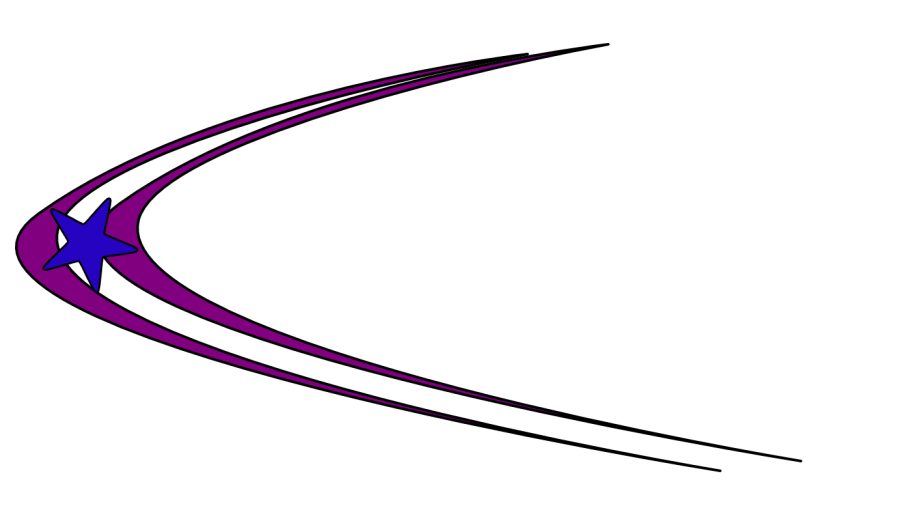ISE Core Team
With a superb team of experts, having worked for the main space agencies and flag ship space missions (ESA, NASA etc.) and a lean management structure, ISE can offer highly optimized and tailored solutions to address clients space mission needs.

Irene Schneider
CEO & Founder
Irene Schneider
CEO & Founder
BS in Physics, MS Geosciences & Planetary Habitability. Penn State University.
Irene holds a master’s degree in Geosciences from the Pennsylvania State University (Penn State) the US, with a specialty in Astrobiology, space radiation environments on the Moon and Mars, and planetary habitability. Her research was focused around the radiation environments on the Moon and Mars and in collaboration with. Dr. Francis Cucinotta, former Chief radiation officer at the NASA Johnson Space Center Professor and emeritus professor James Kasting, a world recognized authority in planetary habitability. She also holds a BS in Physics (with honors) from the University of South Florida (USF) the US. She has a long-life passion in addressing the critical emergency scenarios that can arise if astronauts on a space mission would be exposed to a mayor solar storm potentially compromising mission success and the health of the astronaut crews.
Irene possess as well an in depth knowledge of nuclear physics due her training at the Cern Accelerator Physics School, a Doctoral research grant in the field of Nuclear Physics by the University of Groningen, The Netherlands and courses taken at the Nuclear Engineering Department at the Pennsylvania State University in Reactor Systems, Radiation Health Physics amongst others. at the University of Pennsylvania.
She posseses speclialized training from the Belgium Nuclear Research Center training academy, SCK, Belgium in issues such as Nuclear Safeguards and Nuclear Proliferation.
Irene has been an independent adviser to the Center for Aerospace Medicine Research (CIMA) of the Spanish Airforce, in space issues and a scientific advisor to the LifeBoat Foundation space settlements board. Irene is an invited member of the ASTM F47 Commercial Spaceflight committee and the Task Group within which deals with space radiation mitigation.
She has been Chief radiation officer as an independent consultant for the NASA funded full scale lunar analogue, together with project lead Pablo de Leon, which was designed and constructed under the direction of the University of North Dakota, Department of Space Studies (UND), and which was finalized in 2014.
Irene Schneider has as well as innate passion in communicating high level scientific ideas to the public. She has been an invited keynote speaker at prestigious scientific meetings and conferences such as the RAMSTEIN / NATO Aeromedical Congress at Ramstein Airforce base in Germany, Newspace 2011 at NASA Ames, the AIAA 40th International Conference on Environmental Systems, The Space Show" and many more.
She has been featured on ABC News, when she was invited to be part of Crew61 at the MDRS Mars Society Research Station where she was funded by NASA, by Telemundo ‘Al Rojo Vivo’, and produced a documentary on her research for the Penn State Research magazine on the habitability of planet Mars in regards with her participation in the MDRS NASA/Mars Society space manned simulation in the desert of Utah, USA.

Anthony Lai
Satellite and Spacecraft Onboard
Electronics
Anthony Lai a graduate of UCLA University of California, the US, brings to ISE his extensive expertise in large-scale and complex project development, technology transition, and systems engineering in addition to ample expertise in radiation analyses, design, testing and integration of payloads into various satellite and space platforms.
Mr. Lai earned his B.S.E.E. from the University of California, Irvine, in 1993 and his M.S.E.E. from the University of California, Los Angeles, in 1995. He is a U.S. citizen and holds an active Secret clearance with COMSEC training.
During his tenure in the space industry, Mr. Lai leads radiation analyses, design, testing, integration of payloads into various satellite and varios space platforms for governments around the world such as TacSat-3, FalconSat-5, ORS-1, Orbital Express, Spirit and Opportunity rovers as well as commercial satellite constellations such as the Orbcomm Generation 2 satellite RF payload. Mr. Lai had led and enabled system development for over 30+ NASA (including Lunar gateway), commercial (most recently with NASA CLPS partners) and DoD space missions in the past decades from requirements definitions to launch campaigns and mission operations.
He exceeds in project management and providing expertise in technology transition and manufacturability of the optimal solutions for projects, using his extensive expertise in component and system engineering for ciivilian and military platforms such as air platforms, missiles and ground vehicles, Naval vessels, and space-based satellites. While at the Jet Propulsion Laboratory (JPL), Mr. Lai successfully managed the integration of instruments for the Mars Rover programs, which included qualification and selection of various devices for use on the Spirit and Opportunity rovers. At POC, one of his key roles is leading technology transition for various SBIR projects, including transition of the DRR (data loader) for the F-15 Suite-9 upgrade to the Air Force and transition of the Digital Data Set (DDS) for the T-45, the Data Transfer Unit for the V-22 and F-18, and the Advanced Data Transfer System (ADTS) for common helicopter platforms to Navy PMA-299. Under his leadership, POC is currently in multi-year full-rate production of the T-45 DDS, V-22 DTU, and MH-60R/S, CH-53K, CRH, and H-1Y/Z common ADTS kit systems for various military deployments, as well as LRIP of the other aforementioned projects. Mr. Lai was the project lead for SASHA Phase I and Phase II. Mr. Lai not only has unique experience and expertise in the manufacture of products developed from SBIR technologies, but he is also directly responsible for shipping hundreds of DDS, Sikorsky, and Data Loaders.

Professor James Kasting
Planetary Habitability and
Atmospheres. The Pennsylvania State University.
James Kasting is a Distinguished Professor of Geosciences at Penn State University. He received his undergraduate degree from Harvard University in Chemistry and Physics and did his Ph.D. at the University of Michigan in Atmospheric Sciences. Prior to coming to Penn State in 1988, he spent 7 years in the Space Science Division at NASA Ames Research Center. His research focuses on the evolution of planetary atmospheres, particularly the question of why the atmospheres of Mars and Venus are so different from that of Earth. He is perhaps best known for his efforts to define the liquid water habitable zone around other stars using one-dimensional, globally averaged climate models.
Kasting is the author or coauthor of two books and over 140 research papers. He has served on numerous NASA committees, most recently the Astrophysics Subcommittee to the NASA Advisory Council and the Exoplanet Exploration Program Analysis Group (ExoPAG), which he chaired from 2009-2011. He is a Fellow of the American Geophysical Union, the American Association for the Advancement of Science, the Geochemical Society, the American Academy of Arts and Sciences, and the International Society for the Study of the Origin of Life (ISSOL). In 2008, he received the Oparin Medal from ISSOL for “significant career contributions to the origin of life field”.
Kasting has been a leader in NASA’s search for habitable extrasolar planets. In 2005-06 he co-chaired the Science and Technology Definition Team for TPF-C (Terrestrial Planet Finder-Coronagraph). This mission, when it is finally built, will be designed to find Earth-like planets around other stars, if they exist, and to characterize their atmospheres spectroscopically. This mission is on hold right now, as are many other large NASA space missions, but it is expected to resurface a few years from now when budgetary constraints are not quite so tight. The search for other Earths is described in Kasting’s 2010 book, How to Find a Habitable Planet.
Kasting’s teaching interests are in the field of planetary atmospheres and in modern global change, particularly climate change. His textbook, The Earth System, coauthored with Lee Kump and Robert Crane, explores past and future climate from an interdisciplinary standpoint. It is used in undergraduate courses at Penn State and elsewhere for both science and non-science majors. All three coauthors of this book consider it their duty to teach students about how the climate system works and to help them develop informed opinions on environmental and energy policy.

Dr. Erik Ramberg
Research Associate for ISE.
Head of Detector R&D at The Fermi National Accelerator Laboratory, US.
Dr. Erik Ramberg got his PhD in Experimental Particle Physics in 1990, from the University of Maryland, and his BS in Physics in 1983 from the University of Kansas. He is as well Post-doctoral researcher at Carnegie Mellon University
He is currently head of the Particle Physics Division, in charge of generic detector research at Fermilab. His responsibilities include managing the budget, arranging for research collaborations, and supervising Fermilab’s test beam Facilities, where groups from around the world bring state-of-the-art particle detectors for testing in particle beams. Amongst his profesional experience he counts being Installation manager for COUPP (Chicagoland Observatory for Underground Particle Physics). This bubble chamber dark matter detector requires installation in various underground locations, Co-manager of two Fermilab outreach programs – Saturday Morning Physics for high school students, and Internship for Physics Majors. He is Co-founder of Fermilab Sustainable Energy Club.
Necesitamos su consentimiento para cargar las traducciones
Utilizamos un servicio de terceros para traducir el contenido del sitio web que puede recopilar datos sobre su actividad. Por favor revise los detalles en la política de privacidad y acepte el servicio para ver las traducciones.

